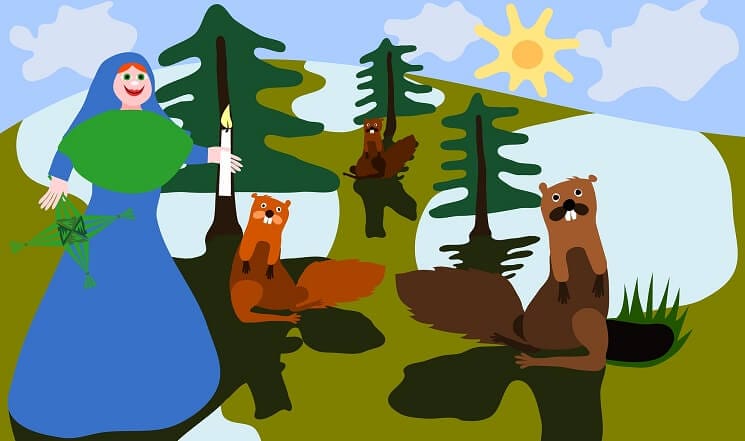Imbolc and Candlemas Celebrations

The Winter Celebrations of Imbolc and Candlemas
Found in France, at the end of the 19th century, The Coligny-Calendar is a compilation of pre-Christian Celtic systems of timekeeping, including the Gaulish Coligny calendar, used by Celtic countries to define the beginning and length of the day, the week, the month, the seasons, quarter days, and festivals. The Gaulish Coligny calendar is possibly the oldest Celtic solar/lunar ritual calendar. Evidence has shown that it was made under the auspices of the Druids, as it shows the Druidical belief in lucky and unlucky days. Each month is divided into a good half (marked “MAT” or auspicious) and a bad half (marked :ANM” inauspicious).
The year was divided into a light half and a dark half. As the day was seen as beginning after sunset, so the year was seen as beginning with the arrival of the darkness, at Samhain. The arrival of the light half of the year started at Beltane. This observance of festivals beginning the evening before the festival day is still seen in the celebrations and folkloric practices among the Gaels, the Irish and the Scots.
The Wheel Of The Year: or four seasons are known as Solar Festivals, the cross-quarter days are marked by Fire Festivals, together they form The Wheel of the Year. These holidays are celebrated from sundown on the date of the holiday through sundown the next day.
Imbolc
An Irish Gaelic word, Imbolc pronounced im-molk, literally means “in milk” or “in the belly”. It is a time for honoring creativity, fertility and receptive, feminine energy. It occurs when daylight begins to lengthen as we approach the Spring Equinox. It is a part of the Wheel of Life where ancient connections mix Irish spirituality with Celtic pagan traditions and Christianity. It is also a time we celebrate love and patience. Celebrated all over the world in different cultures including Imbolgc Brigantia (Caledonni), Imbolic (Celtic), Disting (Teutonic, Feb 14th), Lupercus (Strega), St. Bridget’s Day (Christian), Candlemas, Candelaria (Mexican), the Snowdrop Festival, The Festival of Lights or the Feast of the Virgin.
When: February 1st or 2nd Season: Cross Quarter : (Midway point between Winter and Spring) Represents: Festival of the Maiden, St. Brigid’s Day, Candlemas, Groundhog’s Day, Weather Divination Virtues: Fertility, Patience Symbols: Candle, Ewe Lamb, Crocus Flowers, Corn Doll, Brigid’s Cross, Priapic (acorn-tipped) Wands, Bride’s (baskets) Beds, Seeds Gemstone: Amethyst, Aventurine, Fire Agate, Bloodstone, Carnelian, Citrine, Rose Quartz, Snow White Quartz Color: Red, Green, White, Yellow, Brown Essential Oils: Basil, Cedar, Geranium, Myrrh, Pine, Rose, Rosemary Vetiver Remedies: Angelica, Basil, Dandelion Root, Dill Weed, Rosemary, White Willow Bark, Yellow Dock Flowers: Ancyrensis, Chrysanthus, Crocus, Sieberi, Tommasinianus, Yalta Element: Water Direction: Northeast Life Event: Quickening Lunar: Ice Moon or Full Snow Moon
Click HERE to Connect with your Daily Horoscope!
About the Author
Connect with Andrew Pacholyk MS L.Ac at peacefulmind.com “Living Life, Consciously” Alternative medicine and therapies for healing mind, body & spirit!
Andrew Pacholyk, MS, L.Ac. has been in the alternative health field for over 18 years. He is an expert in treating infertility and gynecology, pain management and anti-aging therapies. His knowledge, expertise and clinical training has offered him the ability to experience and continually learn about the body and its energy system in health as well as in disease.










